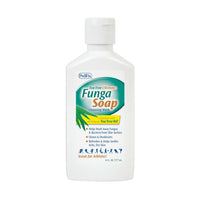Cold Feet
- Summary
- Symptoms
- Read More
Summary
Cold feet can be caused by poor circulation, excessive perspiration or neurological conditions that limit blood flow to the feet. In some cases, cold feet may be due to one or more of these problems. Management of cold feet is often a matter of being pro-active, avoiding a cold or wet environment. Specific medical conditions that contribute to cold feet are discussed in this article.
Symptoms
- Sensation of cold is symmetrical in both feet
- Symptoms worsened by exposure to damp conditions
- Cold hands often found concurrent with cold feet
Description
Warm feet are the product of good circulation and adequate neurological innervation of the feet. Warmth is brought to the foot by way of arterial blood flow. Warm blood nourishes the tissue of the leg and foot providing oxygen and stabilizing the body temperature. The most obvious reason for cold feet is a decrease in normal circulation. Many folks with compromised circulation describe feeling cold feet not only in the winter months but throughout the entire year.
Causes and contributing factors
One consideration in keeping the feet warm is heat loss. There are a number of ways that the body loses heat. Heat can be lost by conduction. Water is a great conductor of heat. Heat is also lost by windy conditions (convection) and contacting a cooler surface (radiation) such as standing on cold concrete or snow.
Alcohol, hunger, anemia, and cardiovascular disease all make you more susceptible to heat loss and cold weather injury. Smoking and use of smokeless tobacco can contribute to cold feet. Nicotine is a vasoconstrictor that limits blood flow to small vessels.
Anxiety can also contribute to cold feet and hands. Anxiety increases perspiration of the hands and feet, resulting in conductive heat loss. Anxiety also results in vasoconstriction that limits blood flow to the extremities.
Differential Diagnosis
Frostnip
Frostbite
Hyperhydrosis
Immersion foot
Raynaud's disease
Raynaud's syndrome
Trench foot
Treatment
Here are a few tips to protect yourself from the cold this year:
- Be sure your feet are dry- Perspiration is the single most common contributing factor to cold feet. Frequent changes of socks, rotating shoes and using a drying solution on the feet are essential in limiting the amount of moisture surrounding the foot.
- Wear loose shoes - In an attempt to make the feet warmer we’ll wear thicker socks. The tighter the shoe, the greater the constriction of blood flow to the feet and toes.
- Avoid nicotine - Nicotine is a peripheral vasoconstrictor and will significantly contribute to cold feet and hands.
- Avoid alcohol - Alcohol makes you more susceptible to heat loss. Best to just go without.
- Wear a hat - No, I haven’t talked to your mom, but your mom was right. 30% of heat loss is from the head. Wear a hat and your feet will be warmer.
When to contact your doctor
Cold hands and feet can be a symptom of other medical conditions. Most cases of cold hands and feet can be managed by being proactive and avoiding situations where you are exposed to cold or wet environments. If your symptoms include pain or changes in the skin as a result of cold exposure, consult your podiatrist or family doctor for treatment.
References
References are pending.
Author(s) and date
 This article was written by Myfootshop.com medical advisor Jeffrey A. Oster, DPM.
This article was written by Myfootshop.com medical advisor Jeffrey A. Oster, DPM.
Competing Interests - None
Cite this article as: Oster, Jeffrey. Cold Feet. https://myfootshop.com/article/cold-feet
Most recent article update: November 21, 2020.
 Cold Feet by Myfootshop.com is licensed under a Creative Commons Attribution-NonCommercial 3.0 Unported License.
Cold Feet by Myfootshop.com is licensed under a Creative Commons Attribution-NonCommercial 3.0 Unported License.



